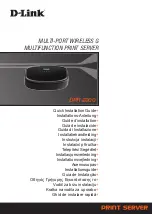
User Manual
Stream MK3/SC2/SH65 series
VOLUMIC • 12bis Rue Louis GARNERAY 06300 NICE • Tel: +33 (0)9 500 27 400 • Email: [email protected] • Web:www.volumic3d.com
page |52|
GOOD PRACTICES
–
TIPS AND TRICKS
Here you will find a list of good practices and tips to follow in order to get the most out of your equipment.
Coils/materials:
•
Store all your coils in the driest place possible, protected from UV rays (in a cupboard for example), if possible in
a zip bag, keeping the small bag of anti-humidity salt usually delivered with it inside. A filament that has absorbed
moisture will become more and more temperamental in printing, and cause random blockages during the
process. The humidity contained in the filament will evaporate by heating gradually in the thermal barrier, which
will cause it to swell and “tighten” in the
conduit. A material that has received a lot of UV is likely to become
more and more brittle, and pose more and more problems when printing.
•
Never leave the filament loose. As soon as you eject it, hold it then pass it immediately through one of the holes
in a flange of the reel in order to immobilize it. A loose filament risks going over and under the winding and
creating knots which will block your printing while using it.
•
Consume an open spool quickly to avoid degradation as much as possible and get the best possible results.
Machinery:
•
Regularly check the front fans of the extruder. These are vital in order to have quality prints, to see prints at all...
Blow them with a can of pressurized air in order to evacuate as much dust as possible which could reduce their
effectiveness on the head. Head cooling is the most crucial point of a 3D printer, do not underestimate it.
•
Avoid leaving waste material in your printer which could get caught in the linear guides, bearings or belts and
reduce the precision of your machine, or even cause breakage or premature wear.
•
Perform a bed calibration (more for safety) each time the machine is moved. This one will only take you a few
minutes and will ensure reliable and hassle-free printing.
•
Never spray adhesion lacquer inside your machine. Take out your glass-ceramic tray and apply your hairspray
outside the machine. The lacquers applied inside the machine will cause it to age prematurely, in particular all
the bearings and guides, which will result in a loss of quality and precision in your prints.
•
Regularly clean the filament drive pulley of your extruder to limit slippage, especially after a blockage, because
the drive pulley can become "stuffed" with materials and lose grip.
•
Clean your glass-ceramic printing bed regularly, in order to maintain an optimal printed surface on the underside
of objects.
•
As soon as signs of repetitive blockages or loss of flow begin to appear, consider changing your nozzle and your
thermal barrier. We advise you to systematically change these 2 elements simultaneously to avoid redundant
problems. Ideally, we strongly advise you to have a complete spare head which will allow you in the event of a
problem to change it immediately without immobilizing the machine for maintenance / repair and taking the
time to repair the first one. or send it back as a maintenance package.
•
If you're having issues with ribs on your prints (either smaller or larger than the model), it's usually due to material
shrinkage in a lot of cases. You can initially increase or decrease the material flow to compensate for this. Change
the extrusion multiplier in 2% increments to compensate for shrinkage as close as possible (Extrusion multiplier
on Simplify3D), without flat surfaces becoming rough (too much flux in this case). You can also change the
number of steps per millimeter via the MENU->CONFIGURATION->MOVEMENTS->STEP PER MM X or Y in order
to adjust your dimensionality at best.
















































